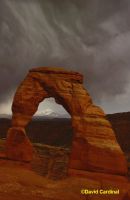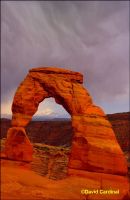- Photo Safaris
- Alaska Bears & Puffins World's best Alaskan Coastal Brown Bear photo experience. Small group size, idyllic location, deluxe lodging, and Puffins!
- Participant Guestbook & Testimonials Candid Feedback from our participants over the years from our photo safaris, tours and workshops. We don't think there is any better way to evaluate a possible trip or workshop than to find out what others thought.
- Custom Photo Tours, Safaris and Personal Instruction Over the years we've found that many of our clients & friends want to participate in one of our trips but the dates we've scheduled just don't work for them or they'd like a customized trip for their family or friends.
- Myanmar (Burma) Photo Tour Myanmar (Burma) Photo Tour December 2017 -- with Angkor Wat option
- Reviews Go hands-on
- Camera Reviews Hands-on with our favorite cameras
- Lens reviews Lenses tested
- Photo Accessories Reviews Reviews of useful Photo and Camera Accessories of interest to our readers
- Useful Tools & Gadgets Handy tools and gadgets we've found useful or essential in our work and want to share with you.
- What's In My Camera Bag The gear David Cardinal shoots with in the field and recommends, including bags and tools, and why
- Articles About photography
- Getting Started Some photography basics
- Travel photography lesson 1: Learning your camera Top skills you should learn before heading off on a trip
- Choosing a Colorspace Picking the right colorspace is essential for a proper workflow. We walk you through your options.
- Understanding Dynamic Range Understanding Dynamic Range
- Landscape Photography Tips from Yosemite Landscape Photography, It's All About Contrast
- Introduction to Shooting Raw Introduction to Raw Files and Raw Conversion by Dave Ryan
- Using Curves by Mike Russell Using Curves
- Copyright Registration Made Easy Copyright Registration Made Easy
- Guide to Image Resizing A Photographers' Guide to Image Resizing
- CCD Cleaning by Moose Peterson CCD Cleaning by Moose Peterson
- Profiling Your Printer Profiling Your Printer
- White Balance by Moose Peterson White Balance -- Are You RGB Savvy by Moose Peterson
- Photo Tips and Techniques Quick tips and pro tricks and techniques to rapidly improve your photography
- News Photo industry and related news and reviews from around the Internet, including from dpreview and CNET
- Getting Started Some photography basics
- Resources On the web
- My Camera Bag--What I Shoot With and Why The photo gear, travel equipment, clothing, bags and accessories that I shoot with and use and why.
- Datacolor Experts Blog Color gurus, including our own David Cardinal
- Amazon Affiliate Purchases made through this link help support our site and cost you absolutely nothing. Give it a try!
- Forums User to user
- Think Tank Photo Bags Intelligently designed photo bags that I love & rely on!
- Rent Lenses & Cameras Borrowlenses does a great job of providing timely services at a great price.
- Travel Insurance With the high cost of trips and possibility of medical issues abroad trip insurance is a must for peace of mind for overseas trips in particular.
- Moose Peterson's Site There isn't much that Moose doesn't know about nature and wildlife photography. You can't learn from anyone better.
- Journeys Unforgettable Africa Journeys Unforgettable -- Awesome African safari organizers. Let them know we sent you!
- Agoda International discounted hotel booking through Agoda
- Cardinal Photo Products on Zazzle A fun selection of great gift products made from a few of our favorite images.
- David Tobie's Gallery Innovative & creative art from the guy who knows more about color than nearly anyone else
- Galleries Our favorite images
DPS 3-10: Photoshop LAB Color Review, D200, new chargers
In this issue we've got a complete review if the exciting new color correction book from Dan Margulis, Photoshop LAB Color, as well as info on some great new products that have been introduced just in time for Christmas. In particular, check out http://www.nikondigital.org for the Nikon D200 specs. We've also still got a couple slots for our second Grizzly Bear & Puffin week in July 2006, so sign up soon.
The Photoshop LAB Book: The Canyon Conundrum
Could you fix the image on the left of Delicate Arch?
Can you turn |
Into |
If you are experienced Photoshop user, I'm sure your answer is "yeah, probably, but it might take some work." The first time I worked on those images it took me a long time also. Then I read Dan Margulis' book Photoshop LAB Color and discovered how useful the LAB color space was for color correction. Sure, I'd always known that it could be used as a clever way to do Luminance sharpening and some tone correction, but never thought much about using it for color correction. Now it is one of the first tools I consider when I have an image that requires some color heavy lifting. |
After reading the book (or more honestly flipping through for the tidbits I could quickly understand) I was able to re-process this image and the others shown below in only a couple of minutes each and produce results that were superior to what I'd accomplished previously with oodles of layers, masks and fiddling. What fun! A more thorough reading revealed a whole new world of color correction opportunities using the very powerful LAB colorspace.
The Magic of LAB
As someone fascinated by the way human vision works, I've always been interested in the LAB colorspace. For those not familiar with LAB, it is a representation of color that separates the luminance (overall brightness or "lightness") or "L" channel from the color channels--"A" and "B". While we most often think of the human visual system as being RGB, it also relies heavily on the contrast between Red and Green and Blue and Yellow. Not by coincidence, those are the A and B channels in LAB. The result is a very powerful colorspace that can cause dramatic changes in our perception of an image by creating and destroying contrast easily and quickly. And by having the L channel separate from colors it is possible to do operations including sharpening without accidentally adding color casts.
- Log in to post comments



